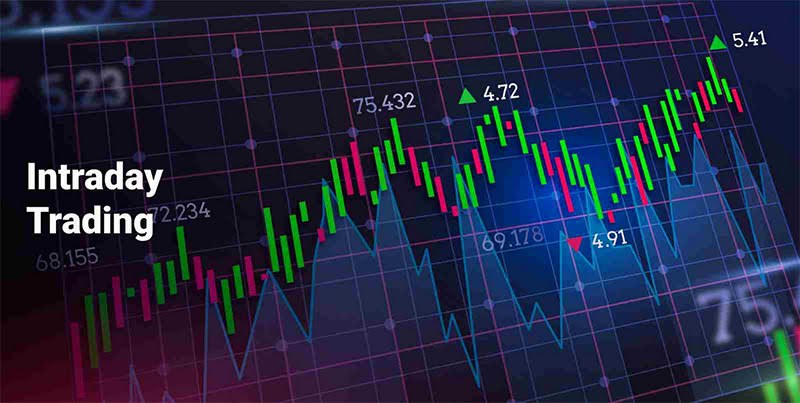For trades that have hold times of several hours, other intraday trading strategies may make use of 30- and 60-minute charts. Even though the intraday trader may keep their positions open for a longer time, they still face high risks. One advantage is that tight stop-loss orders, in which a stop price is raised to limit a long position’s losses, can be used. Another is having access to more margin, which means having more leverage.
Intraday Trading
Despite the fact that all transactions must be completed within the same day in intraday trading, there is no risk of overnight market fluctuations. It offers the possibility to acquire additional pay notwithstanding customary reserve funds. Especially during times of high inflation, many people find that regular savings are insufficient to meet their financial obligations.
Check Here:-
What Is Intraday?
These protections incorporate stocks and trade exchanged reserves (ETFs). The highs and lows that the asset price crosses throughout the day are also referred to as intraday. When the market closes, these frantic traders will settle all of their positions.
- their trades in an effort to profit from price shifts in the short term.
- Intraday strategies that traders employ include news-based trading, range trading, and scaling.
The Basics of Intraday Trading
The new highs and lows of a particular security are frequently referred to as intraday. An intraday high can sometimes be the same as the closing price. Utilizing real-time charts, traders pay close attention to intraday price movements in an effort to profit from short-term price fluctuations.
Intraday Trading Strategies
Numerous intraday strategies are used by traders. Among these strategies are:
- Scalping: Creating various little gains on little cost changes over the course of the day
- Range trading: Utilizing backing and obstruction levels to decide trade choices
- News-based trading: Profiting from the increased volatility surrounding news events by trading
- High-frequency trading: Utilizing sophisticated algorithms to take advantage of minute or instantaneous market inefficiencies
The timing of your trades based on price fluctuations that occur within a single day—sometimes within minutes of one another—is the foundation of each of these strategies.
Check Here:-
Advantages & Disadvantages of Intraday Trading
The fact that positions are not affected by negative overnight news that has a significant impact on the price of securities is the primary advantage of intraday trading. Important economic and earnings reports, upgrades and downgrades made by brokers either before or after the market opens, are examples of this kind of news.
Key Features of Intraday Trading
It is a different kind of trading that doesn’t involve putting shares into a Demat account.
- On the same market day, the trade must be settled.
- Your broker will provide you with leverage in accordance with the SEBI guidelines.
- Because there is leverage involved, even slight price changes can result in larger movements of your invested capital.
- Intraday trading necessitates thorough research of the stocks you wish to take a position in, careful analysis of the chart using indicators, the development of your own strategy, and the inclusion of a stop-loss to prevent substantial losses.
Intraday Trading Indicators
Moving Average:
One of these tools for technical analysis that traders use to predict price trends is the moving average. By generating data representing the average price over a specific interval, it smooths the price fluctuation graph. This interval can be set by traders to be one day, ten days, one hour, five minutes, one minute, etc.
Bollinger Bands:
The trader can use the more sophisticated Bollinger Band technique to determine whether the shares are overbought or oversold. It has three lines.
Relative Strength Index (RSI):
The RSI is a tool for technical analysis that takes into account the current price changes to determine whether a stock is overbought or oversold. Its value varies from 0 to 100. Traditionally, an RSI value above 80 indicates an overbought state, while a value below 20 indicates an oversold state.
Check Here:-
Moving Average Convergence Divergence (MACD):
MACD, a trading indicator, is used to spot signs of a stock price trend reversal or continuation. The difference between the slow-moving average and the fast-moving average is what determines this value. A histogram shows MACD and indicates whether the momentum of a bullish or bearish trend is high or low.
Final Words
The act of buying and selling securities that are listed on the stock market on the same day is known as intraday trading. This kind of trading is mostly used to get capital gains on securities you buy and to lower the risks of holding investments for a longer time.
